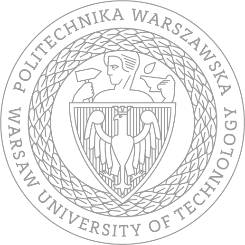Distribution of Excess Regenerative Energy in Electric Transport Systems on the Basis of Fuzzy Logic Application
DOI:
https://doi.org/10.5604/01.3001.0010.0527Keywords:
electric transport, regeneration of the electric power, stores, inverters, regulation of voltage, traction, external power supply, fuzzy logicAbstract
Purpose. To develop the fuzzy model of distribution of excess regenerative energy in traction and external power supply systems allowing to exercise effective operation of the power equipment. Relevance. For effective distribution of excess regenerative energy in systems of electric transport, as well as for systems equipped with stationary stores of energy and inverting traction substations with regulators of output voltage it is necessary to solve a number of the problems with high degree of uncertainty demanding taking into account a set of random factors such as the modes of power lines and traction loadings. These factors have to be considered in operation for choosing the rational modes of energy stores, inverters and regulators of voltage on buses of substations to provide the rational conditions for energy regeneration on electric transport. Scientific novelty. The control system of energy storage devices, inverters and traction substation output voltage regulators, designed on the basis of fuzzy logic, can provide the necessary conditions for the regeneration on electric transport on sections with a shortage of traction power consumption and allows to optimize the distribution of excess braking energy of transport vehicles. It is achieved by determining the rational relationship between the components of the excess current of regeneration in real time, which can ensure a minimum of power losses of regenerative energy in traction and external power supply systems. Practical importance. The use of the developed approach is effective under the conditions of incomplete information received by measurement systems and on the basis of additional studies it can allow to minimize rated capacity of stores, inverters and traction substation output voltage regulators that could reduce the costs of modernization of existing sections and electrification of new electric transport systems.
References
GETMAN, G., 2011. Theory of electric traction. Publishing house Makovetskiy, 456 p.
GOST 6962-75, 1976. The transport electrified from a contact line. Publisher of standards, 3 p.
EN 50163-1996, 1995. Supply voltage of traction railway lines. MCS 29.280, 11 p.
LEONENKOV, A., 2005. Fuzzy modeling in the environment of MathLab and FuzzyTech. SPb.: BHV-St, 736 p.
PASSINO, K., 1998. Fuzzy Control, Addison Wesley Longman. Menlo Park, 522 p.
PIEGAT, A., 2001. Fuzzy Modeling and Control. Physica-Verlag, Heidelberg, 256 р.
RED, S., PAWLIK, M., 2015. Compatibility of the railway system of the European Union. Infrastructure, control, energy, rolling stock. Publ.1, 241 p.
RUTKOVSKAYA, D., 2006. Neural networks, genetic algorithms and fuzzy systems. Нotline -Telecom, 452 p.
SABLIN, O., 2014. The study of the effectiveness of the regeneration process of electric power under the underground conditions. East European journal of advanced technologies, 6/8 (72), 9-13.
[SABLIN, O., BOSIY D., KUZNETSOV V., et al., 2016. The efficiency of regeneration of electric energy on electric transport system with DC inverter traction substations. Bulletin of Vinnitsa Polytechnic Institute, 2, 73-79.
SERGIENKO, N., 2010. Basic directions of work of Ukrzaliznicca for energy conservation and the results. Lokomotiv-inform, 4, 24-26.
SOPOV, V., 2012. Ways of increasing the efficiency of electric braking energy use on rolling stock. Online Electrician: Power industry. New technologies.
SHEVLYUGIN, M., 2007. Decrease of the power consumption and working power of the main power equipment of traction substations of the electric railways by means of energy store devices. Monograph, 151 p.
SHCHERBAK, Y. and NERUBACKIY Y., 2011. Analysis of the use of the regenerative braking on the Ukrainian Railways. Railway transport of Ukraine, 2, 30-34.
SHCHUROV, N., 2002. Theoretical bases of transformation of regenerative energy during braking of the electric rolling stock. Scientific. Bulletin of the NSTU (Novosibirsk), 1(12), 121-129.
SULIM, A., 2012. Economy of the electric power using of the regenerative braking on subway cars. Мater. inter. conf. Electromechanical and power systems, methods of modeling and optimization, KNU of M. Ostrogradsky, рр. 344.
SYCHENKO V., BOSIY D., KOSAREV E., 2015. Improving the quality of voltage in the system of traction power supply of direct current. Archives of transport, 35(3), 63-70.
WANG L., 1997. A Course in Fuzzy Systems and Control. Prentice Hall, 424 р.
Downloads
Published
Issue
Section
License
Copyright (c) 2024 Archives of Transport journal allows the author(s) to hold the copyright without restrictions.

This work is licensed under a Creative Commons Attribution 4.0 International License.









